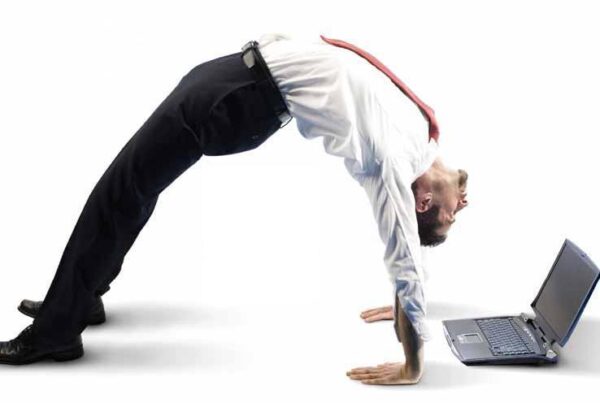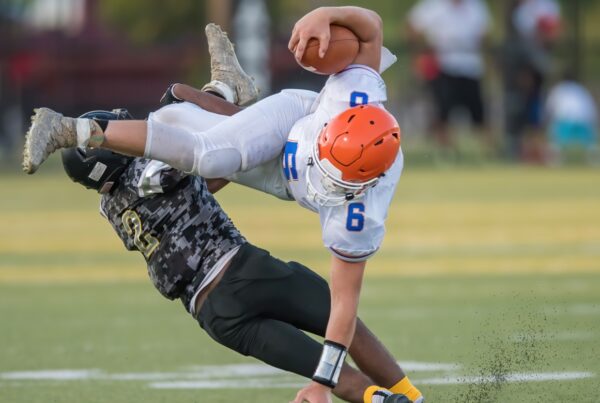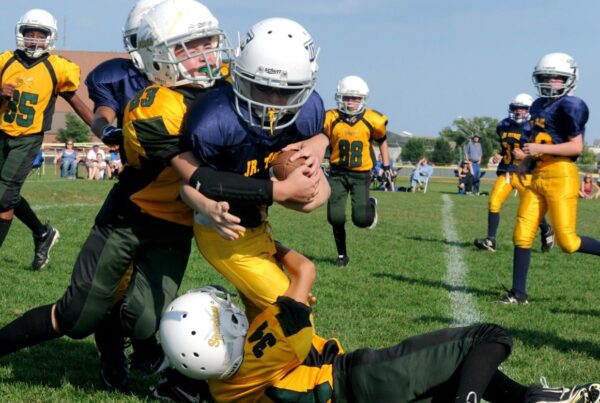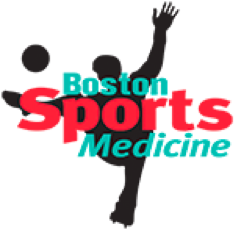by Katherine Hartsell, PTA
If you have been a patient at Boston Sports Medicine, you have likely noticed that we regularly utilize our full-length mirrors for various assessments and during therapeutic exercise. On a fairly frequent basis, patients will interact with the visual support reluctantly, or sometimes avoid it all together. Having trained rigorously in front of the mirror for the many years I worked as a ballet dancer, I empathize with this resistance. The mirror has its limitations, and it certainly carries the risk of evoking a negative eye or a desire to “look good.” For these reasons, and others, I do routinely guide patients to turn away from the mirror, inviting other balancing strategies to sharpen, and different dimensions of awareness to develop. Patients will even progress towards closed eyes for specific exercises.
However, despite my enthusiasm for working beyond the mirror, I also have learned to greatly appreciate what observing one’s reflection has to offer. As Tom Myers, creator of Anatomy Trains says, it is how we use the mirror that determines its value. If we approach our reflection with an open-mind, less judgment, and a bit of objectivity, we can learn to “see” patterns in our body and in our movements that we might not be tuned in enough to feel yet. When we frame “mirror work” in this positive way, patients can gain a new window into their own health.
To help establish the mirror as a useful tool, I ask willing patients to partner with me in observing the visible “baseline” that one walks in with each session. As practiced in specific observational work called Body Reading (of Tom Myers’s Anatomy Trains), we always try to start with noticing something positive. While this can sound a bit fluffy and silly, it is actually an instrumental part of training the eye to see the positive, without which, we could leave behind the many resources that a patient brings to his or her treatment. This observation could be something like stable legs, relaxed shoulders or a warm presence – anything that the provider or patient perceives as a visible “positive” and useful for the treatment ahead.
By beginning the session with a deliberate focus on appreciating the patient’s strengths, we establish the mirror as an alley – a tool for progress. As the session proceeds, the mirror is incorporated to pick up on visible compensations. Perhaps we observe that one hip pulls higher than the other when balancing, or one knee collapses more than its partner in a squat. We also continue to keep our eyes open to the “good” things that we notice. In this way, patients can learn to use the information provided by the mirror to become more skillful with self-observation and self-correction. This visible work later extends into the less obvious proprioceptive layer, where people feel compensation, and then promote balance without relying on visual feedback.
Through this process of befriending the mirror and using it in a healthy way, I have noticed patients experience an unexpected side benefit. Along with improved alignment, increased awareness and proactive enthusiasm, the mirror practice appears to help patients sharpen the skill of self-compassion. I have again and again watched patients slowly dissolve self-judgment as they aim to be objective in their observations. In doing so, they step out of their own way, sweeping away mental and physical roadblocks and freeing up a path for progressive health and well being. Witnessing this has reminded me that physical therapy provides a wonderful opportunity to learn and growth healthy habits.
Katherine Hartsell is a Physical Therapist Assistant at Boston Sports Medicine



